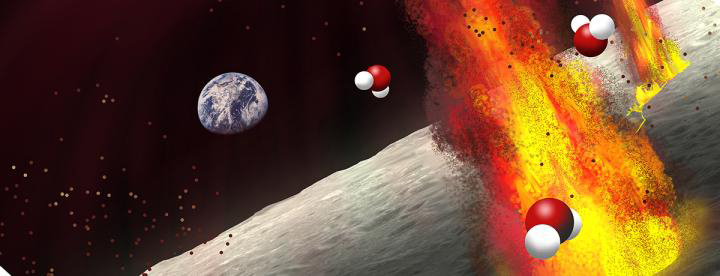
Earth's Moon is usually thought to be completely dry without water. Even when some water is theorized, it is a miniscule amount. But that view is being turned around by a new way of looking at the surface and it points to potentially lots of water inside the moon.
A new study of satellite data finds that numerous volcanic deposits distributed across the surface of the Moon contain unusually high amounts of trapped water compared with surrounding terrains. The finding of water in these ancient deposits, which are believed to consist of glass beads formed by the explosive eruption of magma coming from the deep lunar interior, bolsters the idea that the lunar mantle is surprisingly water-rich.
Scientists had assumed for years that the interior of the Moon had been largely depleted of water and other volatile compounds. That began to change in 2008, when a research team including Brown University geologist Alberto Saal detected trace amounts of water in some of the volcanic glass beads brought back to Earth from the Apollo 15 and 17 missions to the Moon. In 2011, further study of tiny crystalline formations within those beads revealed that they actually contain similar amounts of water as some basalts on Earth. That suggests that the Moon's mantle -- parts of it, at least -- contain as much water as Earth's.
Detecting the water content of lunar volcanic deposits using orbital instruments is no easy task. Scientists use orbital spectrometers to measure the light that bounces off a planetary surface. By looking at which wavelengths of light are absorbed or reflected by the surface, scientists can get an idea of which minerals and other compounds are present.
The problem is that the lunar surface heats up over the course of a day, especially at the latitudes where these pyroclastic deposits are located. That means that in addition to the light reflected from the surface, the spectrometer also ends up measuring heat.
The researchers found evidence of water in nearly all of the large pyroclastic deposits that had been previously mapped across the Moon's surface, including deposits near the Apollo 15 and 17 landing sites where the water-bearing glass bead samples were collected.
The idea that the interior of the Moon is water-rich raises interesting questions about the Moon's formation. Scientists think the Moon formed from debris left behind after an object about the size of Mars slammed into the Earth very early in solar system history. One of the reasons scientists had assumed the Moon's interior should be dry is that it seems unlikely that any of the hydrogen needed to form water could have survived the heat of that impact.
In addition to shedding light on the water story in the early solar system, the research could also have implications for future lunar exploration. The volcanic beads don't contain a lot of water -- about .05 percent by weight, the researchers say -- but the deposits are large, and the water could potentially be extracted.
The research, co-authored by Ralph Milliken, an associate professor in Brown's Department of Earth, Environmental and Planetary Sciences and Shuai Li, a postdoctoral researcher at the University of Hawaii and a recent Brown Ph.D. graduate, is published in Nature Geoscience.